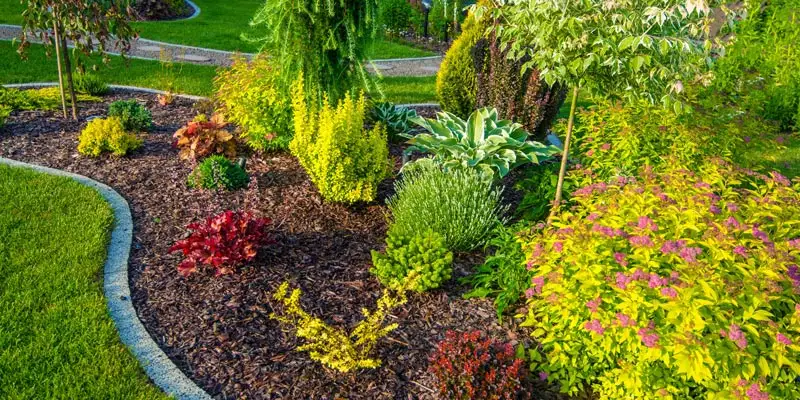The Best Strategy To Use For Landscape Design
The Best Strategy To Use For Landscape Design
Blog Article
How Landscape Design can Save You Time, Stress, and Money.
Table of ContentsLandscape Design - An OverviewGet This Report on Landscape DesignNot known Incorrect Statements About Landscape Design An Unbiased View of Landscape Design
A yard can usually be divided right into 3 locations: public (the front backyard), exclusive (the back backyard), and service (commonly the side yard). The place of task locations depends largely on the kind of location, the size of area needed, the kind of activity, and the preferred proximity to various other tasks and frameworks.
The outside wall surface of the house frequently acts as the first wall or starting point of an outdoor area. Incompatible usages must be divided, and related activities, such as food preparation and dining, should be put with each other to make the backyard much more effective and pleasurable. When making use of hardscape to produce spaces, use building and construction product similar to that utilized in your home for connection from your home right into the garden.
Linked rooms. Credit Score: Gail Hansen, UF/IFAS Utilizing similar hardscape functions and duplicating plants draws the eye around the yard.
This offers a feeling of secret that promotes exploration and discovery of the landscape. From a design viewpoint, plant products have 3 major features in the landscape: visual, architectural and utilitarian. Visually, plants produce an aesthetically enjoyable setting and structurally plants organize and specify rooms. Plants are practical due to the fact that they can transform the setting for the convenience of the user by changing light, temperature and humidity.
The Buzz on Landscape Design
For emotional comfort plants are made use of as physical or implied obstacles for privacy and safety and security. Physical obstacles obstruct both the sight and accessibility to a space and include fencings, wall surfaces and plant hedges. Landscape Design. Suggested barriers, usually low expanding plants, block accessibility however not the view (Figure 9). Other functions of plants consist of cleaning up the air, protecting against erosion and dirt loss, preserving wetness in the soil, and returning raw material to the soil.
Physical and suggested obstacles. Credit Scores: Gail Hansen, UF/IFAS For these reasons, the kinds of plants to be used (such as trees, bushes, or groundcovers) need to be picked in the onset of preparation. Plant kinds are selected for their functional capacities so that their future function and needed room can be considered at the exact same time.
The overhead plane, the upright airplane and the ground aircraft should all be taken into consideration to create unit. When the form of a plant bed has been established, the plants ought to be massed (grouped) and split to attain visual unity and the preferred amount of enclosure. The size of a plant mass will depend upon the complete size of the lawn, the size of the individual plants in the mass, and the emphasis or impact desired from the plant material.
Each plant mass remains in front of, behind, or alongside, an additional mass. Figure 11. Horizontal plant layers. Credit Scores: Gail Hansen, UF/IFAS Number 12. Vertical plant layers. Credit: Gail Hansen, UF/IFAS Repeating plants within a mass and repeating masses with similar plants connects the yard together. The individual plant qualities must be thought about to successfully layer and mass plants.
The 20-Second Trick For Landscape Design
All plant structures start with the primary framework plants, the huge, mostly evergreen background plants-such as the trees and huge bushes. These plants different or enframe rooms, regulate the size of the space, and offer the beginning point for picking the appropriate features of the second layer, midground plants, for massing and infill.
Crucial points in the garden must be highlighted by the use of distinct plants, unique frameworks, or garden ornaments. Noting thresholds or click for more info entryways to areas can be finished with gateways, arbors, and actions, or with using unique and vibrant plants. The type and/or design theme of the garden will certainly often help identify the crucial factors and how they should be highlighted.
Other essential areas in the lawn are focal points, which is made use of to visually organize a landscaped area. The type of focal factor frequently relies on the seeing point of view. Various point of views or viewpoints can disclose various compositions in the landscape that may require a variety of prime focus. Contrasting appearance, shape, dimension and color will catch and hold the eye.
Indicators on Landscape Design You Should Know
Plant kinds. Credit Report: Gail Hansen, UF/IFAS After kind, structure is the following dominant function of a plant; crude, tool and great appearances can be utilized for contrast and focus in the landscape.


The pleasant fragrance of plants, the audio of wind in the trees, the audio and texture of water, and the colors and structures of sculptures, pots and additional info yard furnishings all include in the experience of the garden. One information that is frequently forgotten is the effect of light on the aesthetic appeals of the plants.
The whole yard modifications in function and look over the training course of the day, and the program of a year, as the light and temperature modification from early morning to evening and season to period. Plant option should take into consideration a plant's growth price, its mature dimension and type, and the upkeep it will call for.
It is vital to know the ultimate fully grown dimension of plants so they can be positioned in the right go to my site area and spaced correctly when they are installed. Giving plants space to grow is a difficulty due to the fact that the usual fully grown dimension is typically based on optimum expanding conditions and the ecological problems of a site might trigger a plant to enlarge or remain smaller sized.
Report this page